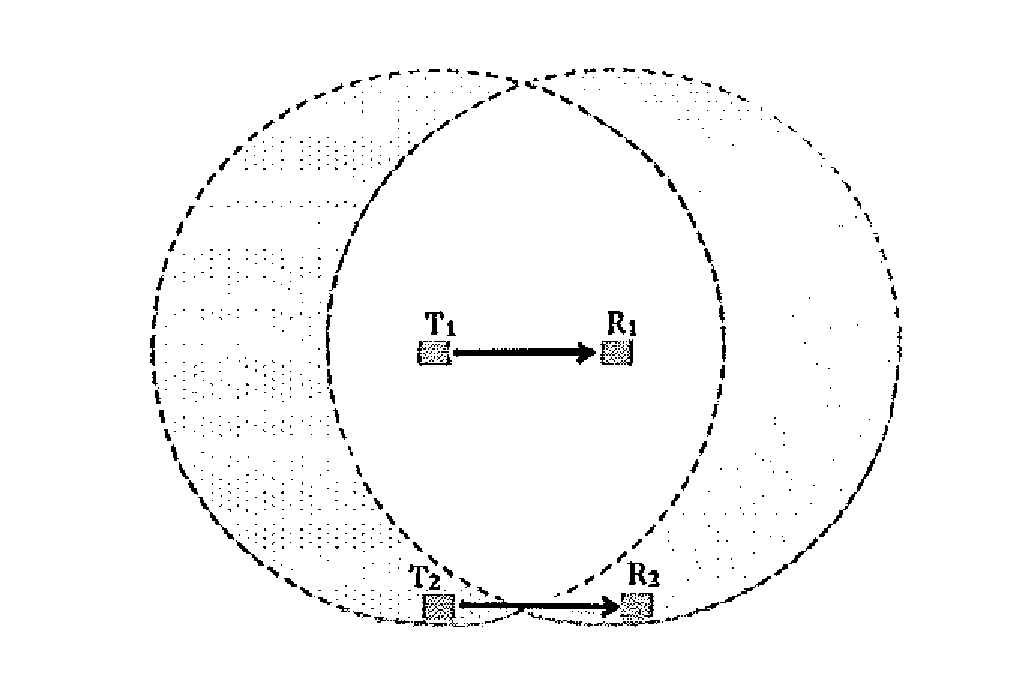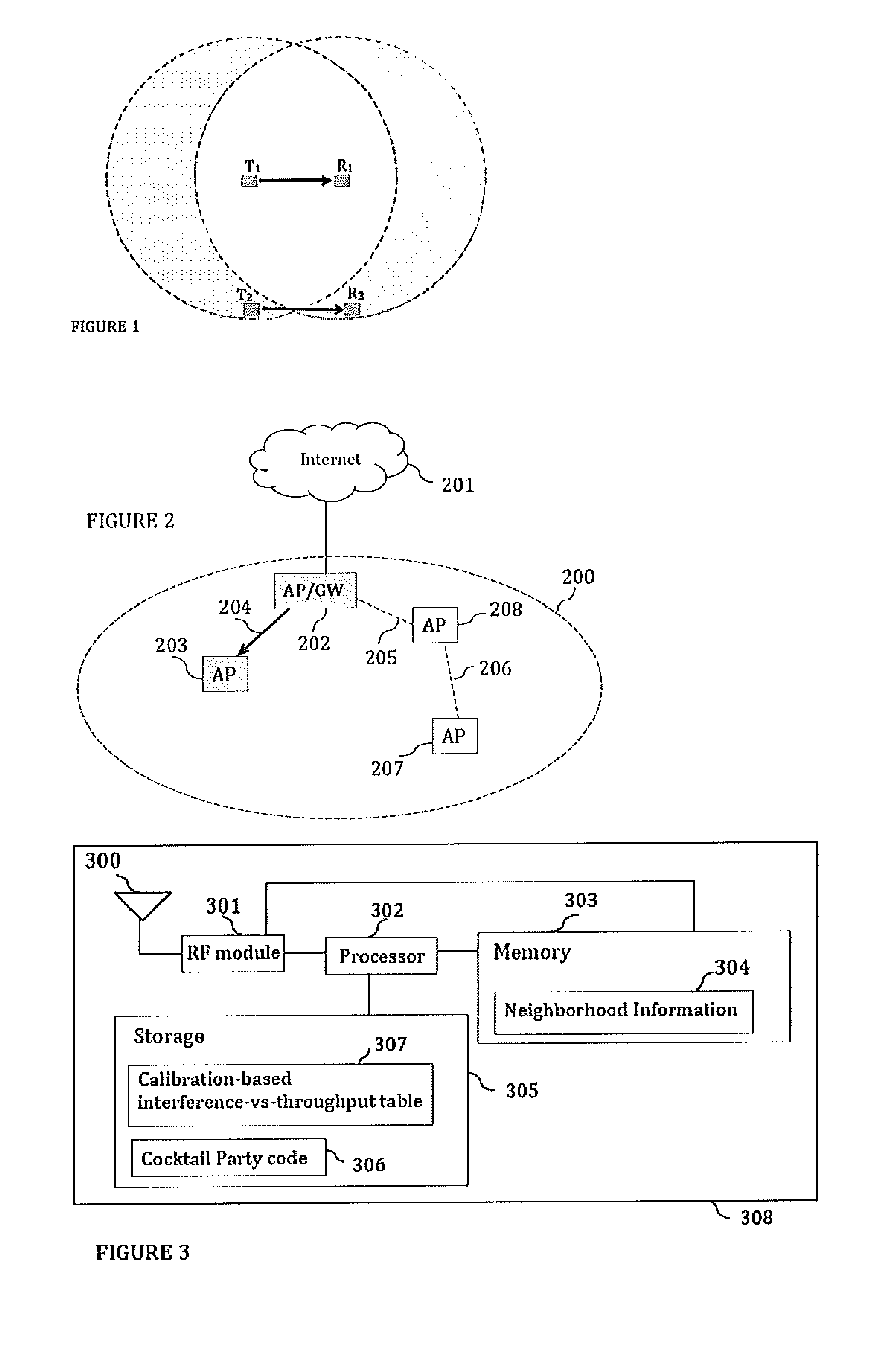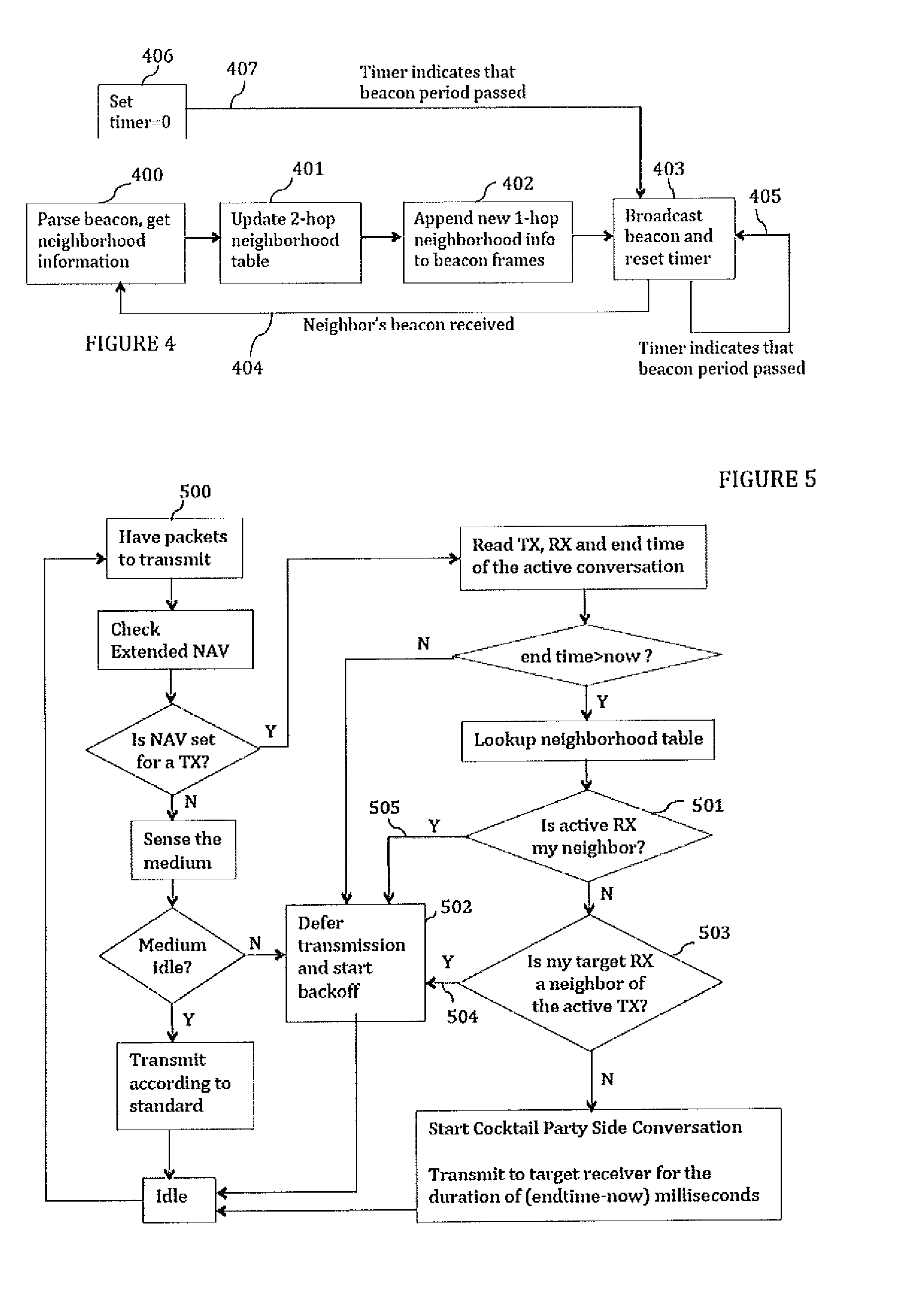Cocktail party: side conversations and talking over in wireless mesh networks
a wireless mesh network and side conversation technology, applied in the field of wireless networks, can solve the problem that the ieee 802.11 dcf mac protocol does not allow nodes to transmit, and achieve the effect of reducing any jitter
- Summary
- Abstract
- Description
- Claims
- Application Information
AI Technical Summary
Benefits of technology
Problems solved by technology
Method used
Image
Examples
Embodiment Construction
[0053]FIG. 2 is a block diagram of a wireless network 200. Cocktail Party-capable node may be an Access Point (AP), a Gateway, a Video Bridge or a Station. These nodes may form a mesh, multiple disconnected meshes or may communicate directly with each other. Each communication link 204, 205, 206 may be unidirectional or bi-directional. A communication on a link is directional; in network 200, the communication on link 204 is from transmitter 202 to receiver 203. According to the IEEE 802.11 DCF MAC standard, node 208 cannot transmit while there is an ongoing transmission on link 204.
[0054]A Cocktail Party-capable wireless network device contains an RF module, a memory, a processor and a storage unit. FIG. 3 is a diagram showing the internal components of a Cocktail Party-capable node. The memory contains a packet buffer, the address of which is known to both the RF module and the processor. The processor fills up the packet buffer; RF module empties it as it transmits the packets as...
PUM
 Login to View More
Login to View More Abstract
Description
Claims
Application Information
 Login to View More
Login to View More - R&D
- Intellectual Property
- Life Sciences
- Materials
- Tech Scout
- Unparalleled Data Quality
- Higher Quality Content
- 60% Fewer Hallucinations
Browse by: Latest US Patents, China's latest patents, Technical Efficacy Thesaurus, Application Domain, Technology Topic, Popular Technical Reports.
© 2025 PatSnap. All rights reserved.Legal|Privacy policy|Modern Slavery Act Transparency Statement|Sitemap|About US| Contact US: help@patsnap.com



